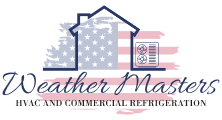Allergens inside our homes often come from places we don’t think about, and air ducts are one of them. Dust, pollen, pet dander, and mold can collect in the ductwork and spread through every room when the system runs. When air ducts hold allergens, they circulate them throughout the home and make allergy symptoms worse.

We usually focus on cleaning surfaces, but the air we breathe matters just as much. If ducts stay dirty, they can turn into a steady source of irritation for anyone sensitive to allergens. By understanding how ducts affect indoor air, we can take steps to limit exposure and improve comfort.
Our goal is to explain how ducts influence allergens, what types are most common, how they affect health, and what strategies can help reduce them. With the right approach, we can make our homes healthier and easier to live in.
How Air Ducts Influence Indoor Allergens
Air ducts move air through our homes, and with that air comes particles that affect indoor air quality. The way ducts are maintained, and how the HVAC system operates, can determine how allergens spread and settle in different rooms.
Air Ducts and the Circulation of Allergens
When air ducts collect dust, pollen, and pet dander, these particles often get pushed back into the air we breathe. Each time the HVAC system turns on, allergens can move from one part of the house to another.
Dirty ducts may also hold moisture, which can support mold growth. Mold spores are light and can easily travel through ductwork, lowering air quality in multiple rooms.
We should also remember that ducts act as passageways. If they are not sealed well, they can pull in particles from attics, crawl spaces, or basements. This means allergens from outside living areas may enter indoor spaces through the duct system.
Key factors that influence allergen circulation in ducts:
- Dust buildup inside duct walls
- Moisture leading to mold growth
- Leaks allowing outside particles inside
- Frequency of HVAC system use
Role of HVAC Systems in Allergen Distribution
The HVAC system controls how air moves through ducts, which directly affects allergen levels. A system with a weak or clogged filter cannot trap particles effectively, so allergens keep circulating indoors.
If we use high-efficiency filters, more allergens such as pollen, dust mites, and pet dander get captured before reaching rooms. However, filters need regular replacement to stay effective.
Poorly maintained HVAC systems can also spread allergens faster. For example, a blower fan coated with dust may push particles into the ductwork every time it runs. This constant movement reduces indoor air quality.
Important HVAC factors to watch:
- Filter type and condition
- Regular cleaning of components
- System efficiency and airflow balance
Airflow and the Spread of Contaminants
Airflow patterns inside ducts decide how far allergens travel. Strong airflow can carry particles to every vent, while weak airflow may cause debris to settle inside ducts and release later.
Uneven airflow can also create “hot spots” where allergens gather. For example, dust may collect in bends or corners of ducts and then release in bursts when airflow increases.
We also need to consider how vents are placed. A vent near a carpeted area may pull in dust, while one near a window may draw in pollen. This design affects where allergens enter and how they spread.
Airflow-related issues that affect contaminants:
- Blocked or dirty vents
- Imbalanced duct design
- Sudden pressure changes in the system
- Poor sealing around duct joints
Types of Allergens Commonly Found in Air Ducts

Air ducts can collect small particles and organic matter that affect the air we breathe. When these materials build up, they often circulate through the home and may trigger allergy symptoms.
Dust and Dust Mites
Dust is one of the most common substances found in air ducts. It collects from everyday activities such as cleaning, cooking, and moving around the house. Over time, layers of dust settle inside the ductwork and spread when the system runs.
Within this dust, dust mites often thrive. These microscopic organisms feed on skin flakes and prefer warm, humid environments. They do not bite, but their waste and body fragments can trigger allergic reactions.
We often notice symptoms such as sneezing, runny nose, or itchy eyes when dust mite allergens circulate indoors. Regular duct cleaning and using high-efficiency air filters can help lower the amount of dust and dust mites in the system.
Pet Dander Accumulation
Pet dander consists of tiny skin flakes shed by cats, dogs, and other animals. Unlike hair, dander is very small and light, allowing it to travel through the air and settle in ducts. Once inside, it mixes with dust and continues to circulate whenever the HVAC system runs.
Because dander proteins can cause allergic reactions, even homes without pets may still contain traces if visitors bring it in on clothing. This makes pet dander a persistent allergen that is difficult to remove completely.
We can reduce buildup by grooming pets often, vacuuming with HEPA filters, and cleaning ductwork when levels become noticeable. Air purifiers also help capture airborne dander before it spreads through the system.
Pollen Infiltration
Pollen enters homes through open doors, windows, and even on clothing or shoes. Once inside, it can settle in ducts and continue to circulate long after pollen season ends. This makes pollen a year-round issue in many households.
Different plants release pollen at different times of the year. Common sources include trees in spring, grasses in summer, and weeds in late summer and fall. Because pollen grains are lightweight, they easily travel through ventilation systems.
We can limit pollen indoors by keeping windows closed during peak seasons, using good quality air filters, and cleaning ducts that may trap pollen particles. These steps help reduce exposure for those sensitive to seasonal allergens.
Mold and Mildew Growth
Mold and mildew thrive in damp environments. When moisture enters air ducts from leaks, condensation, or high humidity, it creates conditions for mold spores to grow. Once established, mold can release spores that circulate throughout the home.
Besides triggering allergies, mold often produces musty odors that spread through the ventilation system. These smells can be a clear sign of hidden growth inside the ducts.
We can help prevent mold and mildew by controlling indoor humidity, fixing leaks quickly, and scheduling duct inspections if odors or visible growth appear. Using dehumidifiers and proper ventilation also reduces the chance of spores spreading through the air.
Health Impacts of Dirty Air Ducts on Allergy Sufferers
When dust, pollen, and other debris collect in air ducts, they circulate through the air we breathe. This buildup can worsen allergy symptoms, contribute to respiratory conditions, and cause noticeable changes in our daily health.
Allergy Symptoms Triggered by Airborne Particles
Dirty air ducts can hold dust mites, pollen, mold spores, and pet dander. When air moves through the system, these particles spread into our living spaces. For people with allergies, this constant exposure can make symptoms harder to manage.
We may notice sneezing, itchy eyes, or a runny nose becoming more frequent indoors. Seasonal allergies can feel stronger when indoor air carries pollen that should have stayed outside.
Headaches and fatigue also appear when our bodies work harder to fight irritants in the air. Even those without strong allergies may feel mild irritation from breathing in these particles daily.
Keeping ducts clean reduces the number of airborne triggers that worsen allergy symptoms. This step can make our indoor environment easier to tolerate during high pollen seasons.
Respiratory Conditions and Asthma Risks
Air ducts that are not maintained can add stress to our respiratory health. For people with asthma or other respiratory conditions, breathing in contaminants from ducts can increase risks.
Asthma sufferers may notice more frequent flare-ups when exposed to dust and mold. The presence of tiny particles in the air can narrow airways and make breathing harder.
Children and older adults are especially sensitive to poor indoor air quality. Dirty ducts can contribute to coughing, wheezing, and shortness of breath in these groups.
Regular cleaning helps lower the amount of irritants that can trigger asthma attacks. It also supports a healthier environment for anyone with ongoing respiratory issues.
Signs Your Air Ducts Are Affecting Your Health
We can often spot signs that dirty ducts are harming our health. Common indicators include:
- Frequent sneezing or congestion indoors
- Headaches or fatigue that improve when leaving the house
- Worsening asthma symptoms or increased inhaler use
- Allergy symptoms lasting beyond seasonal changes
If multiple people in the home experience similar issues, the ducts may be part of the problem. These health changes often appear gradually, making them easy to overlook.
Paying attention to patterns in our allergy symptoms and respiratory health can help us decide when duct cleaning may be necessary. This awareness allows us to take steps before the problem grows worse.
Strategies to Reduce Indoor Allergens from Air Ducts
We can limit allergens in our homes by keeping ducts clean, replacing filters on time, and using tools that improve air quality. These steps work together to reduce dust, pollen, and other irritants that move through air ducts.
Benefits of Professional Air Duct Cleaning
Professional air duct cleaning helps remove dust, pet dander, and mold that build up inside ductwork. Over time, these particles can spread through vents and settle on surfaces, making it harder to keep a healthier indoor environment.
When we hire trained technicians, they use specialized equipment to reach deep into ducts. This process goes beyond what we can do with household cleaning tools. The result is cleaner air ducts that circulate fewer allergens.
Key benefits include:
- Lower levels of airborne dust and debris
- Reduced spread of mold spores
- Improved air circulation
Professional duct cleaning is not needed every year for most homes. Many experts suggest scheduling service every 3 to 5 years, or sooner if we notice visible dust buildup, musty odors, or signs of mold.
Importance of Regular Filter Changes
Air filters trap dust, pollen, pet hair, and other small particles before they enter ducts. If we let filters clog, airflow drops and allergens can bypass the filter. This makes filter changes one of the simplest and most effective steps we can take.
We should check filters monthly and replace them as needed. In most homes, that means every 1 to 3 months. Homes with pets, smokers, or people with allergies may need more frequent changes.
Filter types to consider:
- Fiberglass filters: inexpensive, but capture fewer particles
- Pleated filters: better for trapping dust and pollen
- HEPA filters: high efficiency, useful for allergy-sensitive households
By keeping filters clean, we maintain steady airflow and reduce the amount of allergens that circulate indoors.
Supporting Measures: Air Purifiers and Humidity Control
Even with clean air ducts and fresh filters, extra steps can further reduce allergens. Air purifiers help capture fine particles like pollen, smoke, and mold spores that filters may miss. Units with HEPA filters are especially effective for bedrooms and living areas.
Humidity control also plays an important role. Dust mites and mold thrive in damp spaces. We should aim to keep indoor humidity between 30% and 50%. A dehumidifier can help in basements or humid climates, while a humidifier may be useful in very dry seasons.
Together, air purifiers and balanced humidity support cleaner ducts by lowering the amount of allergens that enter the system in the first place. This creates a healthier indoor environment for everyone in the home.




